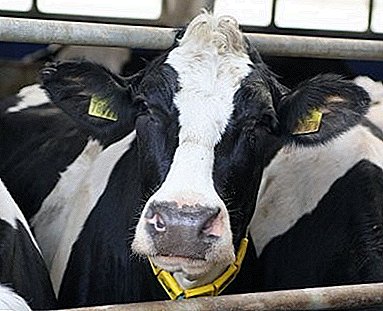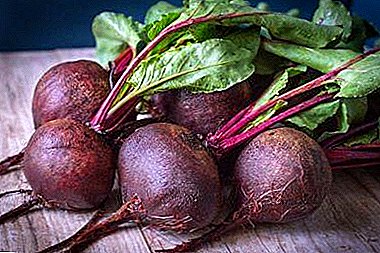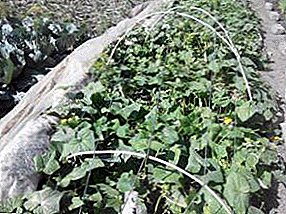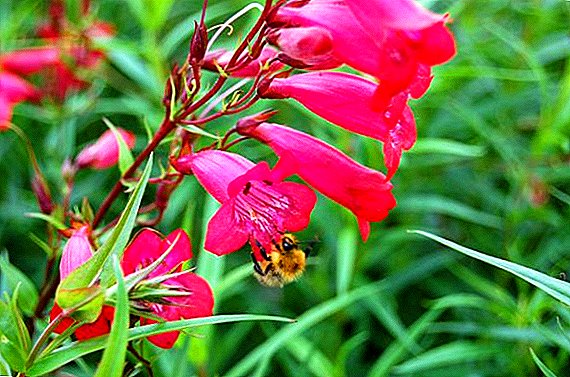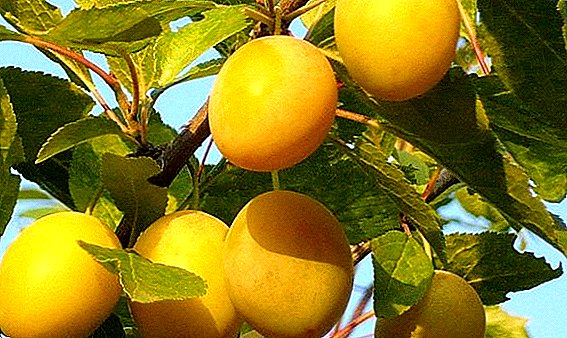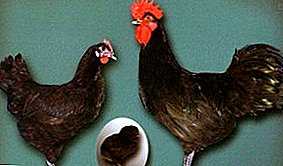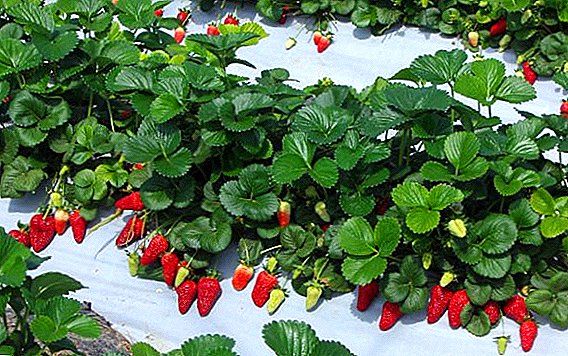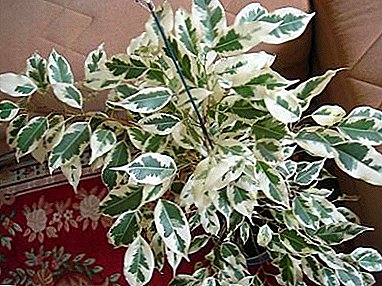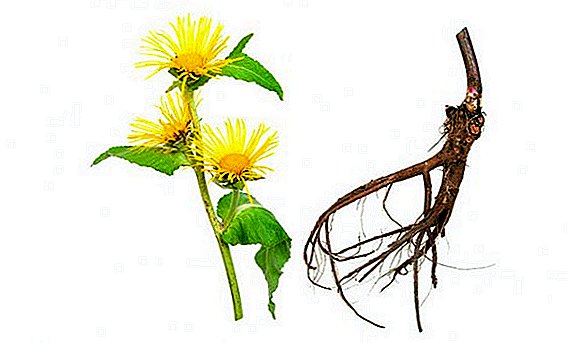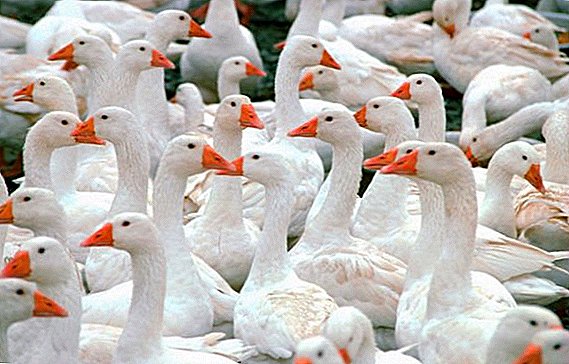 At first glance, the differences between birds of the same species and colors are practically absent. White geese are no exception, but for those who are seriously engaged in breeding these birds, even their external data can say a lot. The main distinguishing feature is weight. Geese are large, medium and small. Large prefer to grow on an industrial scale. Mediums are best suited for breeding at home (for example, on small farms). Small geese are often decorative. Consider the breed of white geese more.
At first glance, the differences between birds of the same species and colors are practically absent. White geese are no exception, but for those who are seriously engaged in breeding these birds, even their external data can say a lot. The main distinguishing feature is weight. Geese are large, medium and small. Large prefer to grow on an industrial scale. Mediums are best suited for breeding at home (for example, on small farms). Small geese are often decorative. Consider the breed of white geese more.
Adler Geese
Named so because the city of Adler is the place where they were withdrawn. Therefore, this breed is very common in the Krasnodar Territory. Birds are like large gray geese, except that the color is white. The body is very large, the head is medium, but the beak is of a rich orange color. A short neck, and a broad chest, legs short and very strong - it's all about the Adler geese.  Productive characteristics:
Productive characteristics:
- The mass of a male is up to 9 kg.
- The weight of the female is up to 7 kg.
- Egg production - 30-40 eggs.
- Egg weight - up to 170 g
Did you know? Everyone knows about swan fidelity, but in fact goose also deserves attention. The fact is that in nature these birds are monogamous and true to their pair throughout their lives. In the event that one of the birds dies, the second grieves for several years before re-connecting with the other bird. And some birds prefer to remain bachelors, which can undermine the characteristics of egg production. But in domestic geese common real harem of 3-4 females, where there is a "beloved wife", which obey the rest of the geese.
Gorky geese
Another breed that got its name from the place where it was bred. All sources note that Gorky geese can be considered very highly productive in both meat and egg direction. Gorky geese are large, it seems that their body is slightly elevated. Under the beak there is a small fold, called a purse, there is also a fold on the stomach.  Productive characteristics:
Productive characteristics:
- The mass of a male is up to 8 kg.
- The weight of the female is up to 7 kg.
- Egg production - up to 50 eggs.
- Egg weight - up to 150 g.
It is interesting to read about the benefits and culinary use of goose meat, eggs, fat.
Governor's
The geese of the governor's breed differ in that in the color the chicks have gray spots that molt with age, and in adult individuals the plumage is white. Their appearance is disproportionate: the size of the head is small, but the back is wide. Curved chest. Legs and beak are the same orange color. If the chick gets enough food, it quickly grows and reaches maturity.  Productive characteristics:
Productive characteristics:
- The mass of a male is up to 5 kg.
- The weight of the female is up to 4 kg.
- Egg production - up to 45 eggs.
- Eggs weight - up to 100 g.
Important! The famous delicacy of foie gras is made from goose liver. However, to obtain a product of the highest quality, it is not enough just to kill the animal. To obtain a "fatty liver," the animal is fixed and forcibly fed throughout life. In a number of countries such breeding of birds is considered a criminal offense, as it involves cruel treatment of animals.
Danish legart
Relatively young breed. Individuals of both sexes are large, which is important for the meat activity, grow rapidly. High fertility is also noted. The color of plumage and eyes are similar to the Italian geese, but have a larger physique. The structure of the body in representatives of this breed also has some differences. If it is more square in males, it is more elongated in females.  Productive characteristics:
Productive characteristics:
- The mass of a male is up to 8 kg.
- The weight of the female is up to 7 kg.
- Egg production - up to 33 eggs.
- Egg weight - up to 160 g
Learn more about the Danish Legart breed.
Italian white
Created by breeders in order to improve the meat productivity of poultry farms. Italian geese are graceful and beautiful, have high activity, but can show aggression in relation to representatives of other species. A special feature is the presence on the head of characteristic cones, as well as skin folds under the beak. The size of the body is medium, but the shape is elongated and rounded. The width of the back is rather large, the neck is wide, short with a small head. Strong paws are orange-red in color, as is the beak.  Productive characteristics:
Productive characteristics:
- The mass of a male is up to 8 kg.
- The mass of the female is up to 6 kg.
- Egg production - up to 55 eggs.
- Egg weight - up to 170 g
Meat of geese of the Italian white breed is considered very high-quality. Also especially appreciated is the liver, whose weight is quite large (up to 600 grams).
Did you know? Since these birds are famous for their very aggressive behavior, when it comes to protecting their territory, one distillery in Scotland began to grow them. As a result, geese ran all over the territory and actively frightened off lovers of petty alcohol thefts.
Linda is white
Bred from Gorky geese. Large build, large weight individuals. The distinguishing characteristic of the breed is a small lump on the head.  Productive characteristics:
Productive characteristics:
- The mass of the male is up to 12 kg.
- The weight of the female is up to 7 kg.
- Egg production - up to 45 eggs.
- Egg weight - up to 170 g
Females of this breed are excellent hens. This fact has a positive effect on the further growth of chicks.
Learn more about breeding lindovsky geese.
Ural white
A very common and popular breed. The body is rather wide and short. The paws are also short, there is a fold on the belly. The head is small in size, set on a beautifully curved neck of short length. The beak is also short orange.  Productive characteristics:
Productive characteristics:
- The mass of a male is up to 6.5 kg.
- The mass of the female is up to 5 kg.
- Egg production - up to 36 eggs.
- Egg weight - up to 150 g.
Check out the breeds of geese: home breeds are the largest.
Rhine
Birds of this breed - a combination of high egg production and high quality meat. A wide convex chest, in some individuals folds are found on the belly. Not very large head with an orange beak planted on the middle neck.  Productive characteristics:
Productive characteristics:
- The mass of a male is up to 7 kg.
- The mass of the female is up to 6 kg.
- Egg production - up to 50 eggs.
- Egg weight - up to 175 g
In our latitudes, this species is considered one of the most promising. Like the Italian breed, it has a large liver (up to 400 grams) of high quality and tender, tasty meat.
Important! Geese are very voracious. So, they are still used for weeding cotton plantations. The numbers speak for themselves: 25 birds clear 10 hectares of the field during the day. At the same time, they do not touch the cotton itself because of their dislike for its taste. So pet appetites should be considered before releasing them on the promenade on their site.
Kholmogorsky
The standard appearance of Kholmogory geese is distinguished by a large horizontal body, as well as a long back with a rounded broad chest. The peculiarity is a curved orange beak with some yellowness. On the forehead growth, also orange. The shade of the cone may be darker if the bird's plumage is dark. There are folds under the beak (wallet) and on the belly.  Productive characteristics:
Productive characteristics:
- The mass of the male is up to 12 kg.
- The mass of the female is up to 8 kg.
- Egg production - up to 30 eggs.
- Egg weight - up to 200 g
Kholmogory geese have excellent immunity, and hence resistance to disease, but at the same time unpretentious.
Read also about the differences and maintenance of geese breeds: Arzamas, Hungarian, Toulouse, Tula.
Emden
These geese come from Emden in Germany. Differ in a large physique, straight back. At the base of the neck under the beak there is a wallet. Feet - short, but strong. The color of the legs is the same as that of the beak, orange. There is a small skin fold at the bottom of the abdomen.  Productive characteristics:
Productive characteristics:
- The mass of a male is up to 10 kg.
- The mass of the female is up to 8 kg.
- Egg production - up to 30 eggs.
- Egg weight - up to 175 g
Given the impressive weight, this is best suited for making meat. Although manufacturers should pay attention to the fact that Emden geese need regular grazing. Indoors, they are often sick and susceptible to various infections.
Read also about species of wild geese.
This was a brief overview of the most common breed of white geese. As you can see, there are no bad breeds, there is an incorrect comparison of an animal with the purpose of its acquisition.


